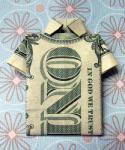Bank Projects Broadcast Growth in 2010
NEW YORK: Broadcast media can look forward to 6 percent growth next year. That’s the take from media investment bank M.C. Alcamo & Co., which analyzed recovery data in the sector from 2002. In the year following the 2001 recession, revenue growth in ad-supported media “over-responded” to underlying gross domestic product growth by a factor of as much as 3-to-1, the firm said
“Data from 2002-03 clearly illustrate a multiplier effect for ad-supported broadcast media,” said Michael Alcamo, the investment firm’s president. “In that recovery, broadcasters saw revenue growth rates that were up to three times the growth rate of underlying GDP. We believe the industry will experience similarly outsized growth rates in 2010-12.
“The consensus forecast for 2010 GDP growth is 2.8 percent. We therefore expect broadcast revenue to grow at 5.6 to 6 percent. Moreover, after the cost cutting of the last 20 months, most of that incremental revenue should be margin.”
The analysis suggested next year’s recovery could exceed the 2002 recovery. The 2001 recession lasted nine months, with unemployment peaking at 6.3 percent. Expectations are for the current unemployment level to peak at 10.5 percent. The strength of a recovery typically reflects the extremity of the downturn, the bank noted.
Several reasons were given for the expected outsized recovery of the broadcast sector as compared to GDP growth.
“First, in the ‘green shoots’ phase of the recovery, advertisers in industrial or consumer retail categories will see outsized gains in EBITDA--in the downturn, firms tightened their cost structure by over-firing employees and reducing cost of goods sold. With greater visibility for continued profits, managers then become more enthusiastic about investing in advertising.
“Secondly, broadcasters themselves have cut costs--through significant cutbacks in newsgathering, JSAs with other firms, and sales of non-core assets. Incremental revenue during the post-recession phase is thus highly profitable. Essentially, the only cost-of-goods-sold on this revenue are sales commissions and other sales costs.
“Finally, during a recovery, advertisers are enterprising and are competitive; ad inventory, however, is finite. To hold and expand market share during the coming cycle, advertisers invest in advertising to mark out territory and block competitors.”
Consequently, television broadcasters and other ad-supported media companies experience “revenue and EBITDA growth rates far higher than underlying GDP growth rates,” Alcamo said.
(Image by Vaguely Artistic)

The professional video industry's #1 source for news, trends and product and tech information. Sign up below.
